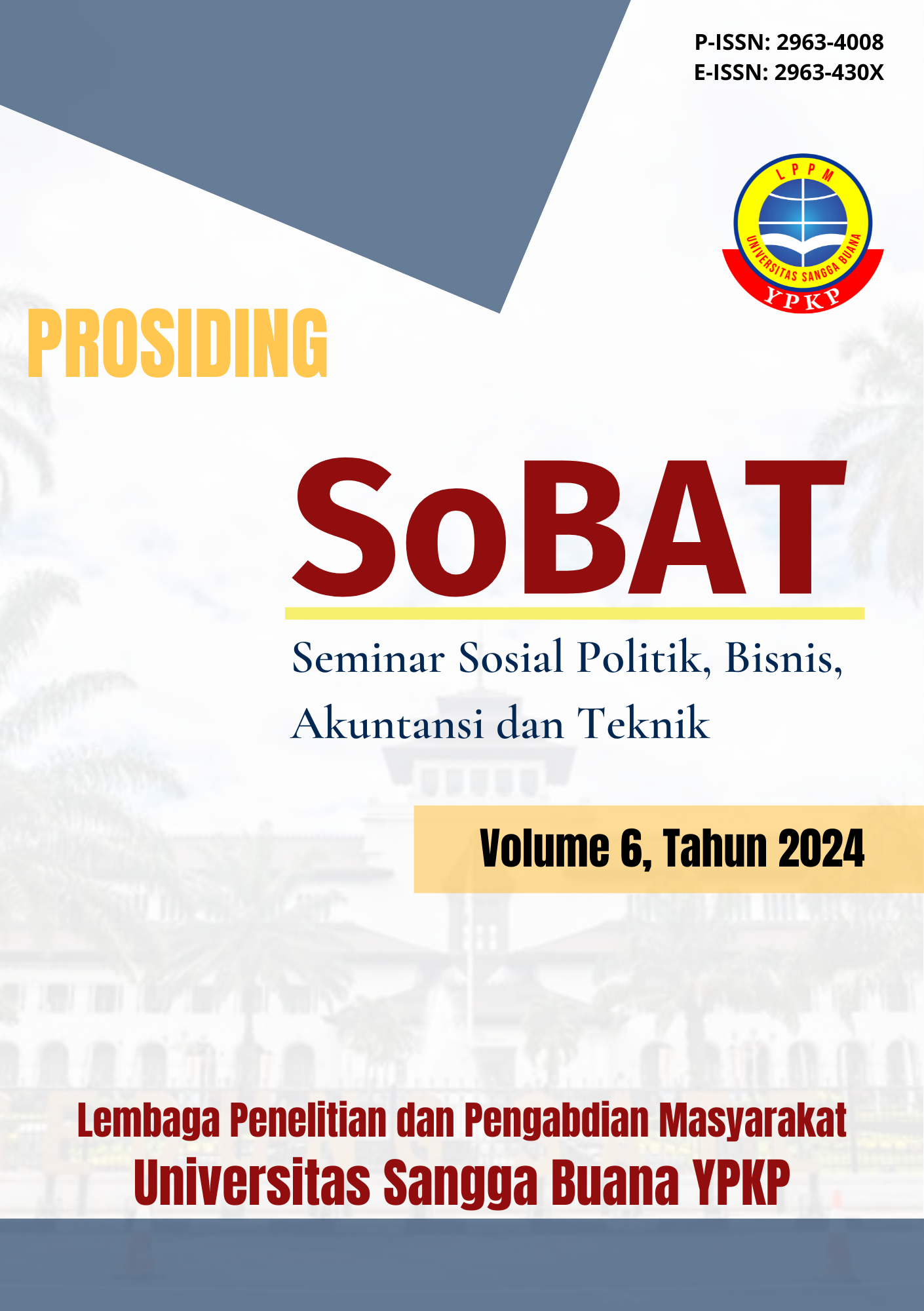KEMAJUAN TERKINI DALAM PENGEMASAN BIODEGRADABLE: PENGGUNAAN KEMASAN BERBASIS POLY(LACTIC-ACID)–TINJAUAN SISTEMATIS
DOI:
https://doi.org/10.32897/sobat.2024.6.1.4174Keywords:
Poly(Lactic-Acid) (PLA), Plastik Biodegradable, Kemasan Ramah Lingkungan, Film Antibakteri, Teknik ElektrospinningAbstract
Peningkatan populasi dunia telah memicu lonjakan produksi plastik global, dari 1,5 juta ton pada tahun 1950 menjadi 370 juta ton pada tahun 2020, dengan proyeksi empat kali lipat pada tahun 2050. Sistem industri berbasis ekonomi linier yang mengandalkan bahan baku fosil telah terbukti tidak berkelanjutan akibat berkurangnya sumber daya alam dan dampak negatifnya terhadap lingkungan. Untuk mengatasi tantangan ini, plastik biodegradable seperti Poly(Lactic-Acid) (PLA) menjadi alternatif menarik dalam pengemasan ramah lingkungan. PLA memiliki biodegradabilitas tinggi, emisi gas rendah, toksisitas minimal, serta kompatibilitas dengan peralatan pengolahan plastik konvensional, menjadikannya solusi berkelanjutan untuk kemasan pangan. Penelitian ini bertujuan mengeksplorasi PLA sebagai bahan kemasan biodegradable dengan fokus pada pengembangan material yang berkelanjutan, termasuk kombinasi PLA dengan biopolimer lain seperti kitin untuk menciptakan film kemasan antibakteri menggunakan teknik elektrospinning. Pendekatan tinjauan sistematis dilakukan dengan menganalisis artikel ilmiah terkini (2018–2023) yang relevan. Hasil penelitian ini diharapkan dapat memberikan wawasan tentang potensi PLA sebagai solusi inovatif untuk mengurangi dampak negatif plastik konvensional terhadap lingkungan dan keanekaragaman hayati.
References
KARLSSON, Magnus Bo, et al. Climate footprint assessment of plastic waste pyrolysis and impacts on the Danish waste management system. Journal of Environmental Management, 2024, 351: 119780.
Alola, Andrew Adewale, and Tomiwa Sunday Adebayo. "Analysing the waste management, industrial and agriculture greenhouse gas emissions of biomass, fossil fuel, and metallic ores utilization in Iceland." Science of The Total Environment 887 (2023): 164115.
Gzyra-Jagieła, Karolina, et al. "Modification of Poly (lactic acid) by the Plasticization for Application in the Packaging Industry." Polymers 13.21 (2021): 3651.
WU, Jia-hui, et al. Electrospinning of PLA nanofibers: Recent advances and its potential application for food packaging. Journal of Agricultural and Food Chemistry, 2022, 70.27: 8207-8221.
Malek, N. S. A., et al. "Preparation and characterization of biodegradable polylactic acid (PLA) film for food packaging application: A Review." Journal of Physics: Conference Series. Vol. 1892. No. 1. IOP Publishing, 2021.
Ncube, Lindani Koketso, et al. "Environmental impact of food packaging materials: A review of contemporary development from conventional plastics to polylactic acid based materials." Materials 13.21 (2020): 4994.
Singhvi, M. S., S. S. Zinjarde, and D. V. Gokhale. "Polylactic acid: synthesis and biomedical applications." Journal of applied microbiology 127.6 (2019): 1612-1626.
Jamshidian M, Tehrany EA, Imran M, Jacquot M, Desobry S. Poly-Lactic Acid: Production, Applications, Nanocomposites, and Release Studies. Comprehensive Reviews in Food Science and Food Safety. 2010;9(5):552-571.
Niaounakis M. Biopolymers: Applications and Trends. Oxford: William Andrew Publishing; 2015.
Andrady AL, Neal MA. Applications and Societal Benefits of Plastics. Philosophical Transactions of the Royal Society B: Biological Sciences. 2009;364(1526):1977-1984.
Auras R, Harte B, Selke S. An Overview of Polylactides as Packaging Materials. Macromolecular Bioscience. 2004;4(9):835-864.
Avérous L, Pollet E. Environmental Silicate Nano-Biocomposites. Springer-Verlag Berlin Heidelberg; 2012.
Banjanin, Bojan, et al. "Global market structure." Polymers for 3D Printing. William Andrew Publishing, 2022. 353-367.
Barca, Adele, et al. "Managing waste packaging for a sustainable future: a strategic and efficiency analysis in the European context." Environment, Development and Sustainability (2024): 1-23.
González-López, Martín Esteban, et al. "Current trends in biopolymers for food packaging: a review." Frontiers in Sustainable Food Systems 7 (2023): 1225371.
Ghasemlou, Mehran, Colin J. Barrow, and Benu Adhikari. "The future of bioplastics in food packaging: An industrial perspective." Food Packaging and Shelf Life 43 (2024): 101279.
Taib NA, Rahman MR, Huda D, Kuok KK, Hamdan S, Bakri MK, Julaihi MR, Khan A. A review on poly lactic acid (PLA) as a biodegradable polymer. Polymer Bulletin. 2023 Feb;80(2):1179-213.
de Oliveira PZ, de Souza Vandenberghe LP, de Mello AF, Soccol CR. A concise update on major poly-lactic acid bioprocessing barriers. Bioresource Technology Reports. 2022 Jun 1;18:101094.
de Albuquerque TL, Júnior JE, de Queiroz LP, Ricardo AD, Rocha MV. Polylactic acid production from biotechnological routes: A review. International journal of biological macromolecules. 2021 Sep 1;186:933-51.
Wu L, Park J, Kamaki Y, Kim B. Optimization of the fused deposition modeling-based fabrication process for polylactic acid microneedles. Microsystems & Nanoengineering. 2021 Aug 2;7(1):58.

